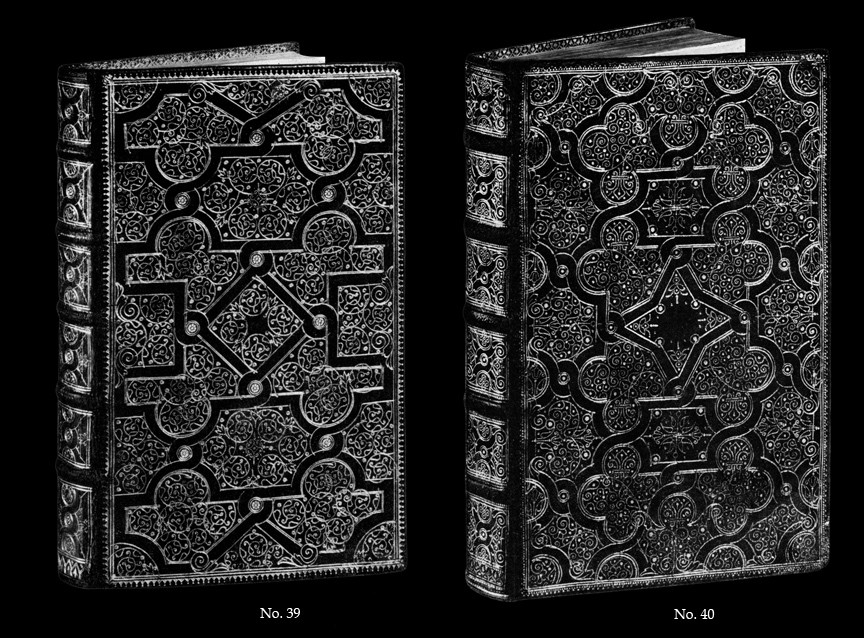

| The two bindings reproduced above (click on the image to see an enlargement) are from Esmerian's 1972 Auction Catalogue, I have also reproduced below Esmerian's description of these two items. Both items are copies of Antoine Ruette's 1661 publication of L'OFFICE DE LA SEMAINE SAINT. Esmerian notes in his description of Item 39 that G.D. Hobson has listed this particular binding as one of 19 bindings by Antoine Ruette (1935 Les Reliures a la fanfare. p. 65 No.250). In his description of Item 40 he adds that this binding is also one of the 19 Antoine Ruette bindings listed by Hobson (pp.64-65 No. 249). |
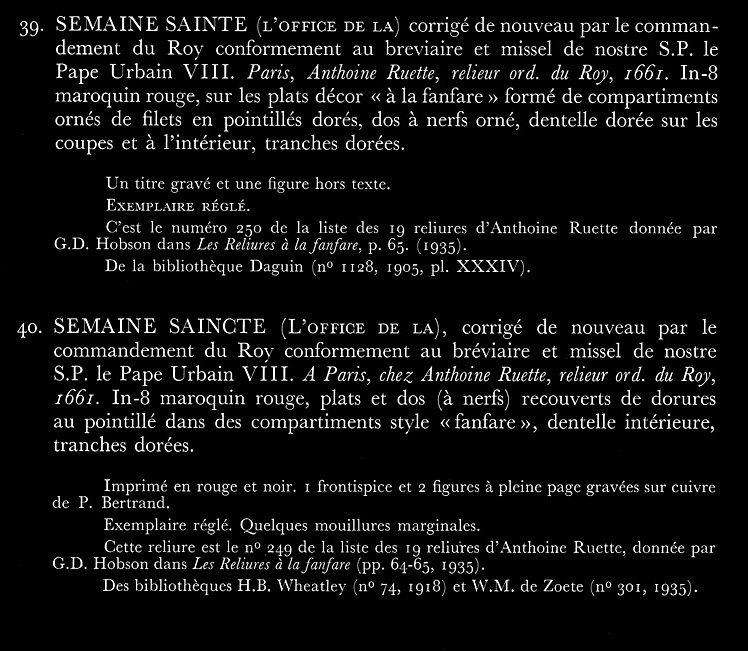
| The first thing that we notice about these two bindings is that as far as tool imprints are concerned they are quite different, in fact you cannot see within them a single common tool. Our study of Ruette bindings thus far indicates that he often used certain "favorite" tools that are almost always found on all of his bindings. We can also observe that he generally used a wide selection of tools on a single binding. Thus Item 39 seems to be quite unlike most Ruette bindings. An in depth comparative study of the tool imprints found on Item 39 reveals some interesting if not incredible results |
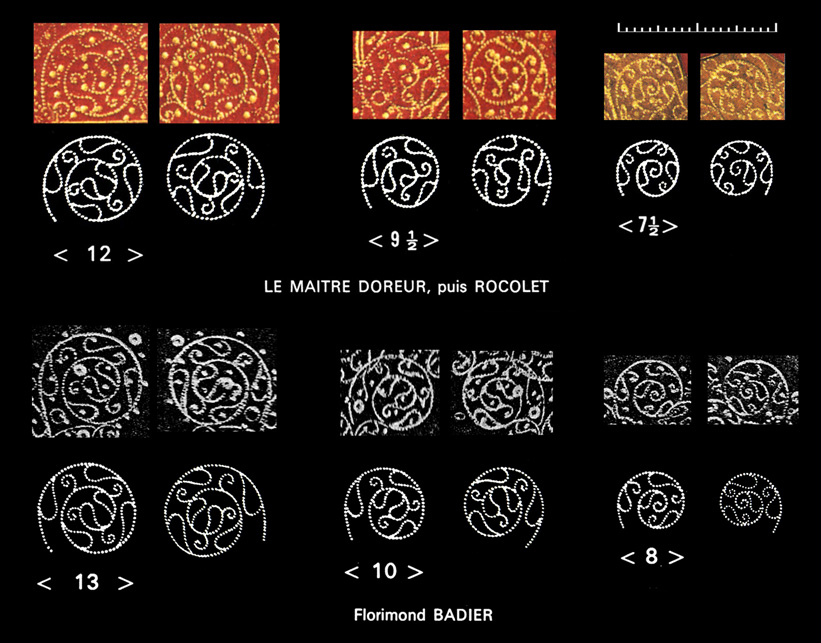
| From the very beginnings of the use pointille tools, a largish spiral tool, "tortillon", was made popular by Le Maitre Doreur, the trend was followed by Badier, as well as the workshops of Rocolet and Ruette. Often these tools were very similar and they must be studied closely to spot their individual differences. Badier's spirals were nearly identical copies of those of the Maite Doreur. In Comparative Diagram one I have reproduced Esmerian's Maitre Doreur imprint models as well as those of Florimond Badier accompanied with copies of actual imprint samples. When these diagrams are enlarged we can see how the models differ from the imprints, as well as the differences in the tools of Badier as compared with those of the Maitre Doreur. After 1638 the imprints from the Maitre Doreur's tools are found in Rocolet bindings. Fortunately the spirals used by Antoine Ruette are somewhat different. In Item 39 we see an extensive use of a set of large spirals, however in item 40 we do not see a single spiral of this type. To find a comparable Ruette spiral we need to look at Item 38, here we find a very similar tool. |
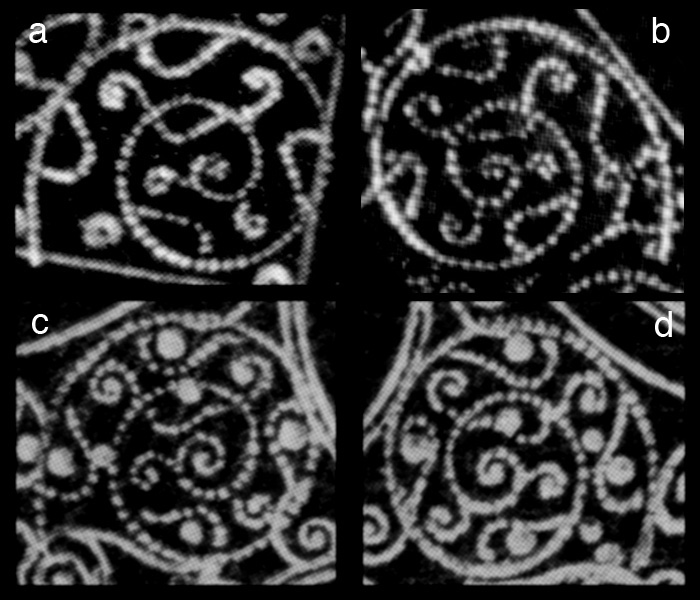
| Comparative Diagram 2 is a 600 dpi enlargement of spiral imprints from Item 39 and Item 38, (which is an obvious Ruette binding as a previous study of the outer roulette on the binding has shown). A close study of these imprints reveals that they were not made by the same tool. The imprints found on Item 38 are from Ruette's original tools, while those of Item 39 are from a set of repiica tools. These tools are very nearly identical and if you were to look at the two bindings without the advantage of enlargements you would never notice the difference. |

| In Comparative Diagram 3, I have reproduced from Esmerian's Tableau VI - ANTOINE RUETTE 1640-1669, three large scroll wings as well as actual imprint models. A careful search for these tools in the bindings of Macé and Antoine Ruette, reveals that Macé Ruette did not use such a tool or if he did it wasn't often. The small, 1633 Macé Ruette binding reproduced by Isabelle de Conihout & Pascal Ract-Madoux, Reliures françaises du XVIIe siècle, Paris 2002, page 26, example #8 would have to stand as an exception. However Antoine Ruette used these tools extensively. The first example, (a) is found on the 1633 binding, (note that it has only three lobes or points) as well as numerous other Antoine Ruette bindings . At some point in time Antoine Ruette (1661?) replaced the three lobed example with a 4 lobed tool (b) of almost identical size. We can see that Antoine Ruette was still using the four lobed tool right up to 1669 (the end of his career?) Esmerian also shows a 5 lobed example in his collection of Ruette tools (c) my first impulse was to reject this as a non Ruette tool, however further research shows that this tool or something nearly identical is found on a binding which Esmerian lists as Macé Ruette's first fanfare binding, with a date of 1621. This binding we will examine on the next page, however I can see how this scroll wing would have been seen as a link to the Ruette workshop. |
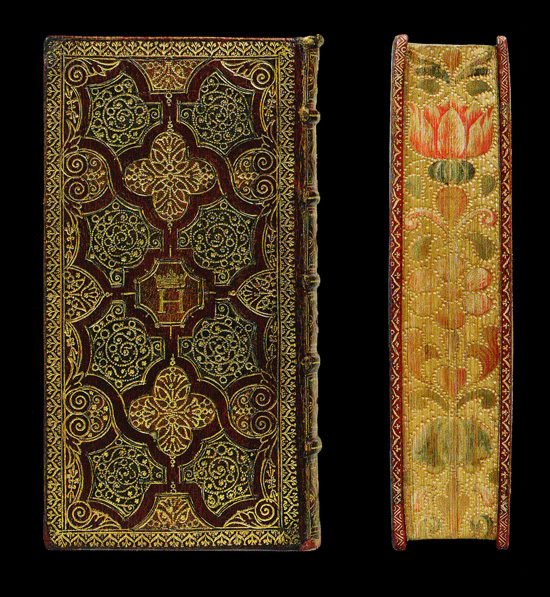
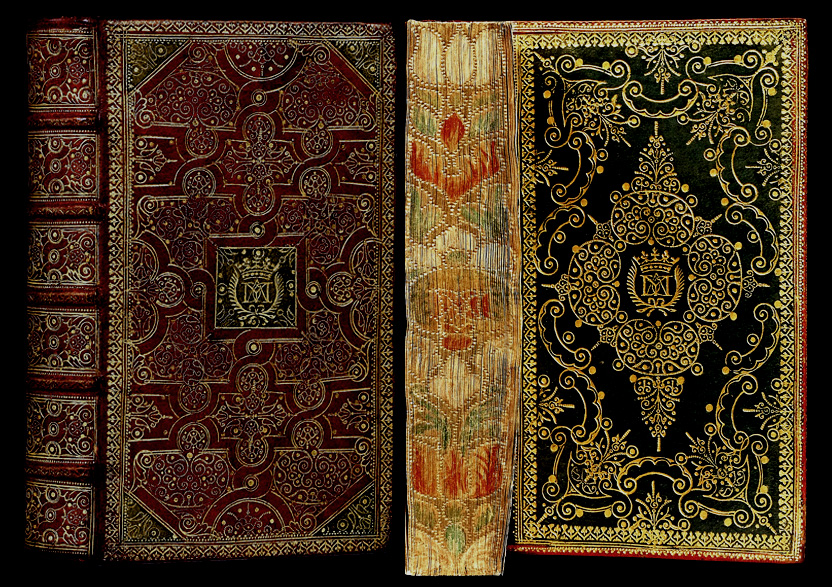
| I have reproduced these two bindings to show, their close relationship, even though their execution is supposed to be decades apart. If we assume the 1633 binding to be the work of Macé Ruette, we must also concede that 36 years later, Antoine Ruette near the end of his career, was producing bindings quite identical in style and technique. |

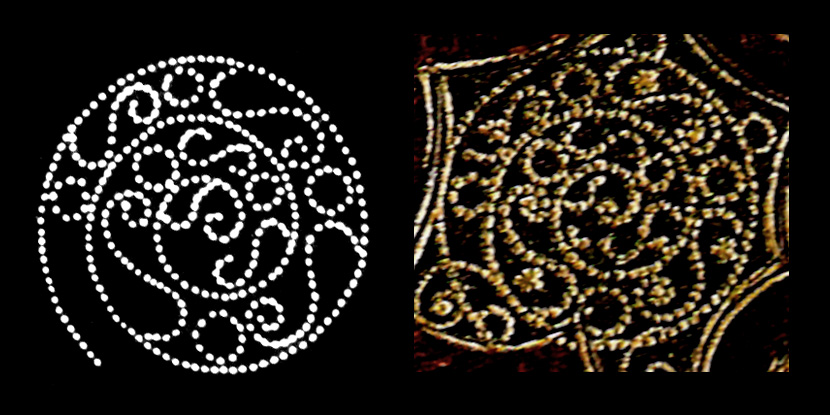
| In Comparative Diagram 4, I have reproduced Esmerian's selection of Antoine Ruette spirals, the largest spiral example, is then compared in Diagram 5 with an actual imprint from the 1633 binding. In the accompanying text given by Isabelle de Conihout & Pascal Ract-Madoux for the 1633 binding (see the reproduced text below), we find that the authors state that Esmerian was not aware of this binding and made no mention of a similar work. On the next page we will look at a 1638 Mace Ruette binding which is possibly one of the last he ever made. From this we will be able to establish what tools and methods he was using at that time. We will then look at a 1640 binding that appears to be the work of Macé Ruette but is perhaps the work of Antoine Ruette. |
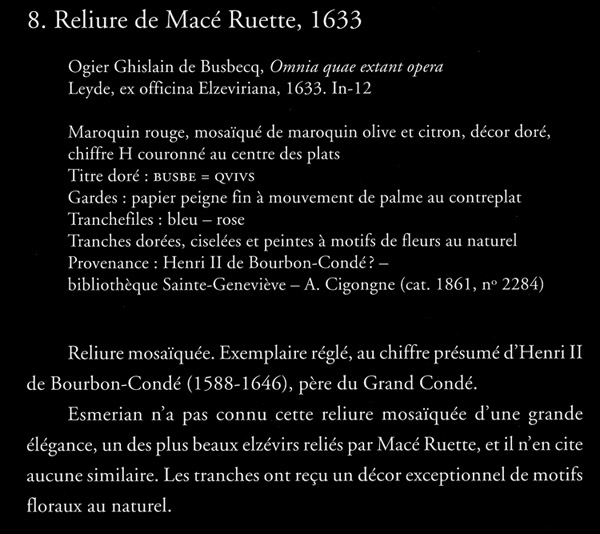
| Reproduced above is the description of binding example No. 8 from the Isabelle de Conihout & Pascal Ract-Madoux, 2002 Paris publication, Reliures françaises du XVIIe siècle. They state that this is one of the most beautiful bindings ever made by Macé Ruette. |
|
See the next page Is it a Macé or Antoine Ruette? Return to the previous page. Antoine Ruette - Tool identification |
| Go to Digital Alchemy | Click on this link to visit cyclopaedia.org |